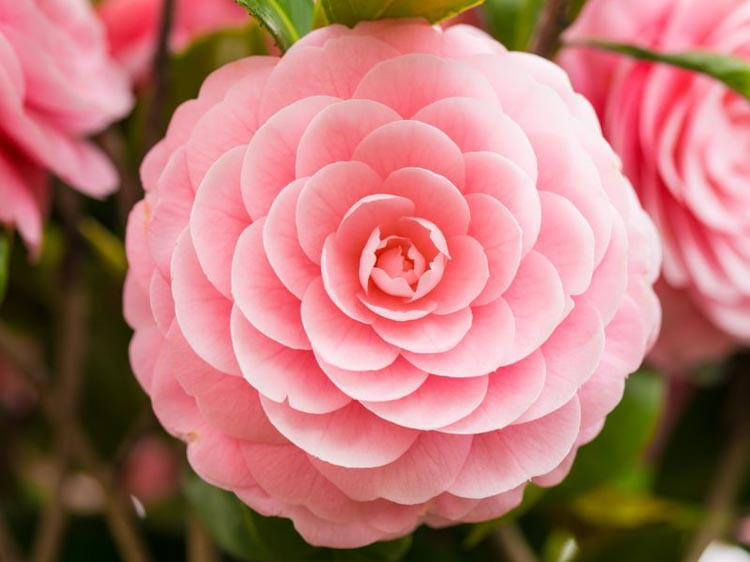Camellia - Expert Tips for Gardening Success
Successfully growing Camellias can be incredibly rewarding. Here are some expert tips to ensure a thriving garden:
Soil Preparation: Camellias prefer well-drained, acidic soil. If your soil is not naturally acidic, consider adding sulfur or organic matter like peat moss to lower the pH.
Location: Choose a partially shaded location. While Camellias can tolerate more sunlight in cooler climates, too much direct sun can scald the leaves.
Watering: Water regularly but do not let the soil get waterlogged. Drip irrigation is often preferable to minimize water on the leaves, which can lead to disease.
Mulching: Apply a thick layer of organic mulch to retain moisture and regulate soil temperature. This is especially important in the heat of summer and the cold of winter.
Fertilization: Fertilize with an acid-forming Camellia or Azalea fertilizer in spring, after the flowers have dropped. A slow-release form is ideal.
Pruning: Prune right after flowering. Remove any dead or weak branches to allow for new growth and better air circulation.
Pests and Diseases: Keep an eye out for common problems like scale, aphids, and Camellia petal blight. Consult your local nursery for appropriate treatments if you notice these issues.
Container Growing: If you don’t have suitable soil, Camellias can also be successfully grown in containers. Make sure the container has good drainage and use a potting mix designed for acid-loving plants.
Propagation: Propagate through semi-hardwood cuttings, ideally in early summer. Use a rooting hormone for best results.
Winter Care: In colder climates, protect your Camellias with windbreaks or burlap to minimize winter damage.

